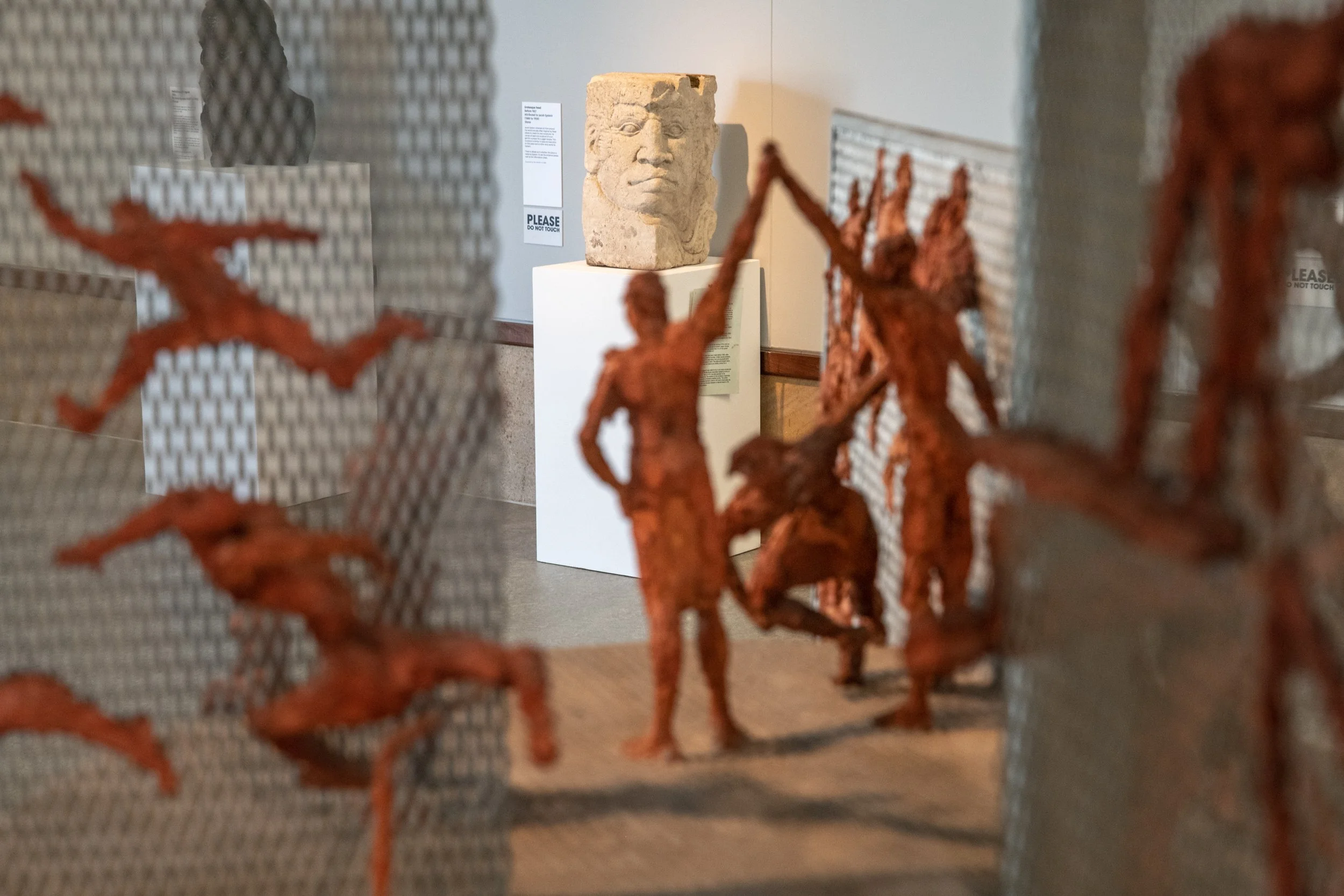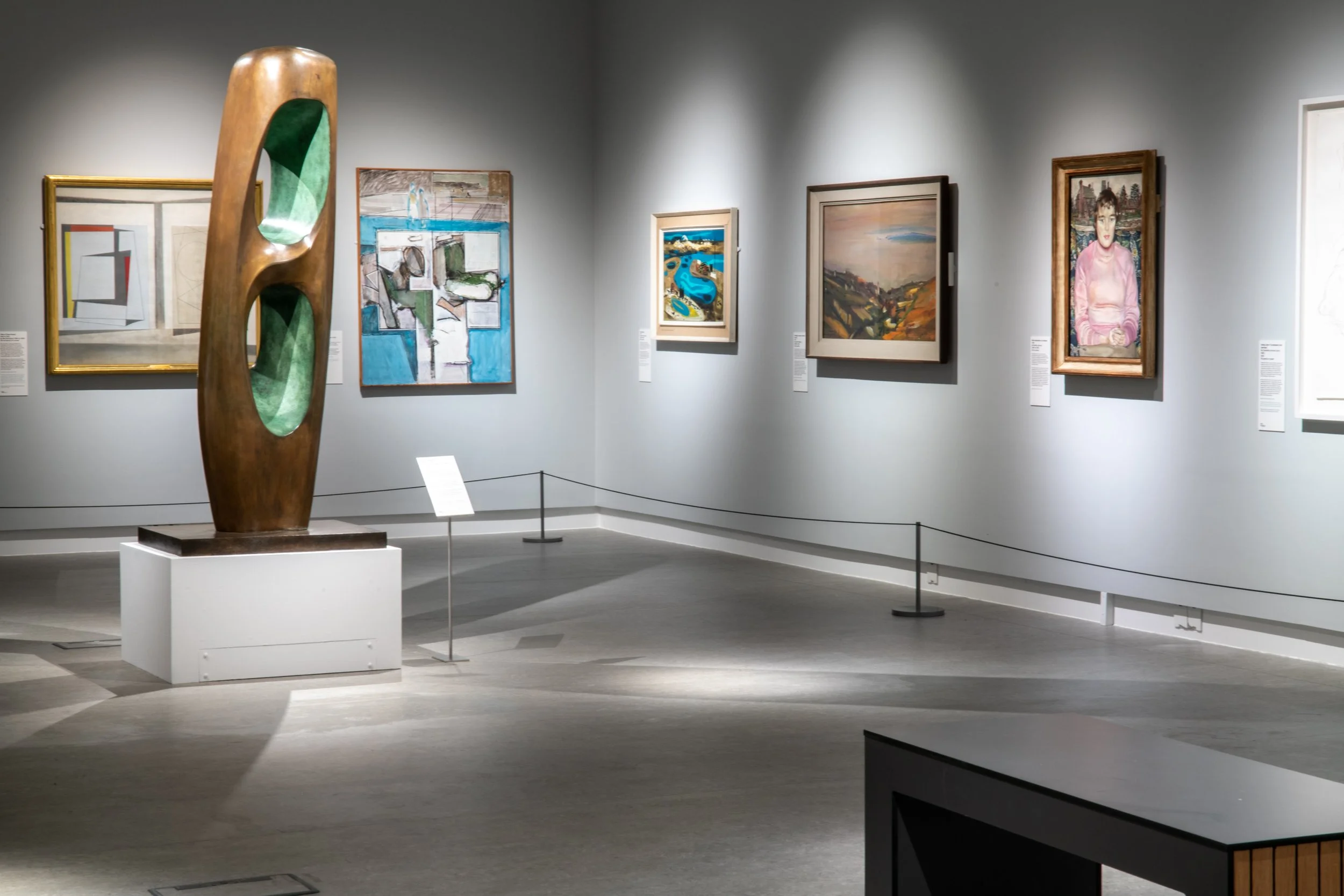
Brought to Light
Herbert Art Gallery & Museum
12 August 2022 - 8 January 2023
Brought to Light shares highlights from the Herbert’s permanent collection, bringing together paintings, drawings and sculptures acquired over 65 years for the people of Coventry to enjoy.
Since the appointment of the gallery’s first art director, John Hewitt, in 1957, the Herbert has built up a rich and varied collection of artworks. This exhibition is a chance to look back on what we have collected over the years and why, from John Hewitt's focus on British Life and Landscape, to our exploration of Peace and Reconciliation, and recent efforts to diversify the artists we collect from.
In 1957, John Hewitt was given the task of building a contemporary collection. He chose to collect works showing scenes of British Life and Landscape, which he felt would appeal to Coventry citizens.
Hewitt held strong socialist views, and this is reflected in the works he selected, which included many views of British towns and cities and working class people going about their everyday lives. Hewitt also collected a small number of more radical works by artists like Barbara Hepworth and Ben Nicholson, in order to reflect current ideas in art. Hewitt retired in 1972.
In the 1980s, the Herbert showed several exhibitions by young Black artists, including The Pan Afrikan Connection, which showcased work by the Blk Art Group. Key acquisitions included two paintings by the South African artist Gavin Jantjes, created during a residency at the Coventry Caribbean Association.
Since around 2010, the focus of the Herbert’s collecting has been on themes of conflict, peace, and reconciliation. This reflects Coventry’s role in promoting peace and reconciliation internationally, something which grew out of the destruction of the Second World War. The Peace and Reconciliation includes works dealing with conflicts from the First World War to the present day, some of which are displayed in our permanent Peace and Reconciliation gallery.
Most recently, a key priority for the Herbert has been to collect works by artists from underrepresented groups to redress a historic imbalance in the collection. These works often overlap with existing themes in the collection around British life and landscape, and conflict and reconciliation. Our newest acquisition is The Madonna of the Cat, after Barocci by Ali Cherri, which you can see in the exhibition next door.
Giant Head of Gbenga (2001 - 02)
By Nahem Shoa (b. 1968)
Oil on canvas
Nahem Shoa is best known for his series of portraits called Giant Heads. Gbenga Ilumoka posed for this portrait in around 50 sessions, each lasting for eight hours. For Shoa, realism in painting is not about realistic photographic detail, but rather capturing something deeper and more meaningful about the subject’s character.
This painting was donated to the Herbert by the artist in 2016. Shoa noticed that most images of Black people displayed in museums were historical depictions of slaves and servants.
He set out to counteract this representation with portraits of contemporary Black British people which he has tried to place within museum collections across Britain in order to reflect diversity in a positive way.
The Coventry Sculpture (1958-59)
By Peter Laszlo Peri (1899 – 1967)
Mixed media
Peter Peri was born in Hungary and spent much of his early artistic career in Berlin. In 1933, he moved to England, where he joined the British Communist Party and the Artists’ International Association, which opposed fascism, imperialism and colonialism through art.
This installation was commissioned for the opening of the Herbert building in 1960 and shows the people of Coventry at work and at play. It reflects their energy and industry in rebuilding their city after the destruction of the Second World War. The figures are natural but heroic, while the structure is abstract. The artist shows himself set aside from this as a figure with a beard.
Scenes from the Passion: Wednesday Week (2003)
By George Shaw (b. 1966)
Humbrol enamel on board
The main subject of George Shaw’s paintings is the tile hill area of Coventry where he grew up. The paintings are based on thousands of photographs taken by Shaw and show empty playing fields, pubs, public buildings, garages, houses and woods. They deliberately convey a feeling of tension and unease.
Shaw works with Humbrol enamel paint, normally used by model makers. He builds up layers which result in vibrant and highly detailed paintings, creating a strong sense of place and memory.
As well as being a painting by a nationally known Coventry artist, this work brings to a contemporary aspect to the Herbert’s British Life and Landscape collection. It was purchased in 2011, the year that George Shaw was nominated for the Turner Prize, with the assistance of the Art Fund and the V&A Purchase fund.
Exodus (2008)
By Ross Jones (b. 1983)
Pencil on mount board
Exodus focuses on the forced evacuation of people from their homes as a result of conflict and the impact of genocide. The scene is immediately familiar, yet there is no specific context, providing space for contemplation and reflection.
Ross Jones’s work is characterised by intricate detail. This is magnified by the expansive white background which invites closer scrutiny and, by extension, greater consideration of the potential for conflict, violence and displacement.
This work was acquired in 2011 as part of the Herbert’s Peace and Reconciliation collection.
Victoria (2003)
By Lisa Gunn (b. 1975)
Liquid light and acrylic on canvas
Lisa Gunn was partially paralysed in a road traffic accident in 1997. In this self-portrait she photographs herself with her wheelchair, challenging society’s beliefs and ideas about disability. The scale of the work requires the viewer to look up at her, placing her in a dominant position. This is in contrast to real life where Gunn feels that people physically and metaphorically look down on her.
Although this is a self-portrait, Gunn has given it the title ‘Victoria’. This is a reference to the restrictions imposed on women in the Victorian period, symbolised by the corset she is wearing, and also to the victory or empowerment she has achieved through her art.
This work was purchased from an exhibition of works in this series by Lisa Gunn, held at the Herbert in 2003.
Old Ladies on a Park Bench (1959)
By Jack Greaves (b. 1928)
Bronze
This was the first sculpture purchased by the Herbert in 1959. Its everyday theme was perfectly in keeping with the spirit of the gallery’s original policy of collecting views of British Life and Landscape.
The idea of representing ordinary people in art was popular after World War II. It reflected a shift towards a heroic vision of ‘the common people’. This work also conveys respect for the endurance and wisdom of older members of the community.
Untitled (the first in the Korabra series) (1986)
By Gavin Jantjes (b. 1948)
Acrylic, sand and pigment on canvas
This is the first in a series of seven paintings by South African artist Gavin Jantjes. They were made in 1986 during a residency at the Coventry West Indian Association.
Jantjes studied in Germany in the early 1980s where he was influenced by the artists Joseph Beuys and Anselm Kiefer, who were trying to address the traumatic history of the Nazi Holocaust in post-war Germany.
Korabra refers to a drum played at funerals and means, ‘to go and come back’ in the Akan language of Ghana. At the centre of this painting is a tomb-like structure, which is encircled by what look like wooden stakes. The dark sky and the scorched, bloodstained earth create a sense of foreboding.
The Herbert holds two of the paintings from the Korabra series. This piece is on loan from the artist, while the second in the series is part of the permanent collection.























